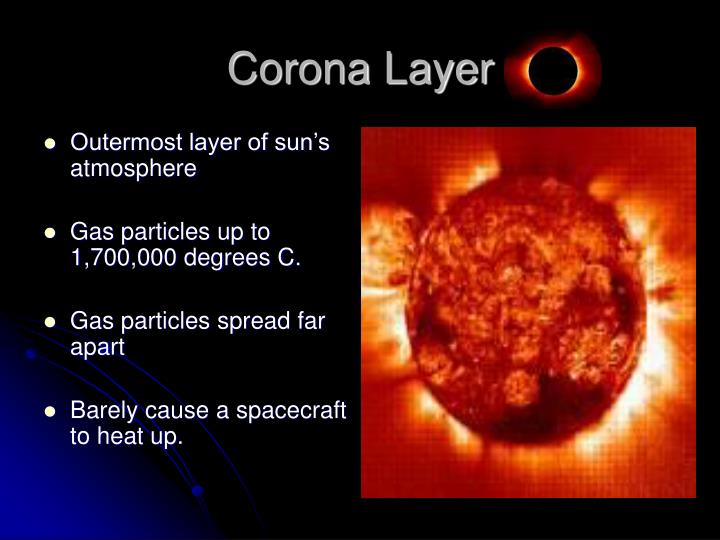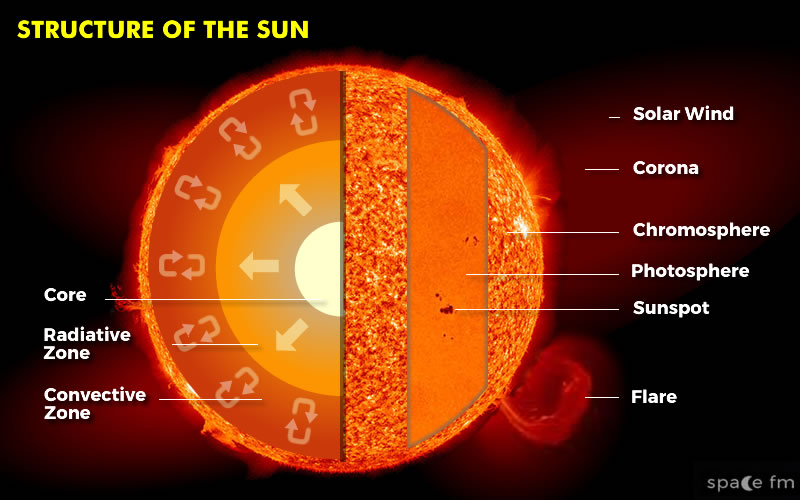

Viewing it without protection can lead to permanent eye damage.īut why does it appear red? Scientists believe that it is because of the presence of large amounts of hydrogen. However, during total solar eclipses, when the Moon blocks the photosphere, the chromosphere can be seen as a red ring around the Sun. The visible light from the chromosphere is often too weak to be seen against the brighter photosphere.

Estimated temperatures are at about 7.800 degrees F / 4.320 degrees C. When it comes to the chromosphere, the next layer of the Sun’s atmosphere, it is far cooler. In the center of the big sunspots, temperatures can be as low as 7.300 degrees F / 4.000 degrees C. Sunspots on the photosphere are colder and darker than the surrounding area. In this region, the Sun’s radiation is detected as visible light. The Sun’s photosphere has been estimated to have temperatures at about 10.000 degrees F / 5.500 degrees C. Large bubbles of hot plasma form a soup of ionized atoms and move upward to the photosphere. Temperatures here drop below 3.5 million degrees F / 2 million degrees C. From the core, energy moves to the radiative zone, where it bounces around for up to 1 million years before moving up to the convective zone, the upper layer of the Sun’s interior. This process creates vast amounts of energy, and it radiates outward to the Sun’s surface, atmosphere, and beyond. The process of nuclear fusion occurs when hydrogen atoms are compressed and fused together, creating helium. Some estimates put the temperatures at 27 million degrees Fahrenheit / 15 million degrees Celsius. In the Sun’s core, gravitational attraction produces immense pressure and temperature. Though it is the hottest object in the solar system, other stars are far hotter, even tens of times so.īut how hot is the Sun? This question is a bit tricky to answer since this celestial object varies tremendously in temperatures, but here are some things to consider. Our Sun is an enormous energy and light-producing sphere of glowing gases. The average surface temperatures are at around 5.778 K, but they vary since it is composed out of three layers. Scientists believe we are billions of years away from this happening, and naturally life on Earth would have become inhospitable a long time before the Sun even reaches that stage.The Sun is nearly a perfect sphere of hot plasma. Seeing as life on Earth relies on the Sun, and with it currently being in its most stable stage, we can acknowledge that at some point the temperature will increase beyond what any form of life can deal with, and most importantly: when the Sun will die.

The methods we have for assessing and evaluating the Sun’s temperature will help us as time passes and the temperature slowly increases, granted we won’t notice much difference in a single lifetime, but it’s important that we have missions and projects in place to record what is happening so that we can not only predict its increase but also by how much. Whilst we know that temperatures differ with different layers, we do know that it’s the core that is the hottest and the photosphere which is the coolest – even though its coolest is still ridiculously hot. So now we know how hot the Sun is, and that answer is: very. It studies the Sun all day every day without any interruption and is made up of 12 scientific instruments that collect all the information required, including assessing the temperature of each of the Sun’s layers. Originally it was only meant to be a 2-year mission, however, it is still ongoing and as of present, the mission has been extended to the end of 2025 where it will be subject to review. The mission itself focused on studying the Sun from the inside out, from all of its internal layers to the outer atmosphere. It was launched by NASA and the ESA with the aim of furthering our knowledge of our closest star. There was one mission that was launched in late 1995, that had the sole purpose of studying the Sun, known as the Solar & Heliospheric Observatory (SOHO). Usually, you would associate reds and yellows with higher temperatures, wouldn’t you? Rather fascinatingly the majority of the energy the Sun emits appears as either blue or green! However, there are various methods to assess the Sun’s temperature, and they have all led us to the same answers. By measuring the amount of light the Sun emits at each wavelength we can cross-reference that with existing graphs and models that have provided us with a ‘colour to temperature’ spectrum such as the CIE 1931 color space.īut we have come to know that a shorter wavelength is linked to a higher temperature, and will show up as either a blue or deep purple. One common method is the use of colour! The science of what colour is emitted in relation to temperature helps us work out the temperature of the Sun and its various layers.


 0 kommentar(er)
0 kommentar(er)
